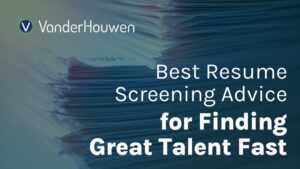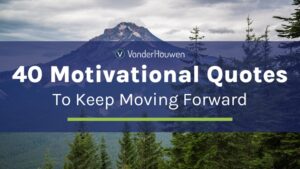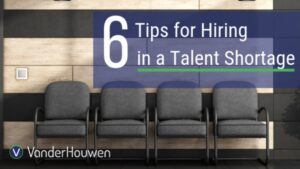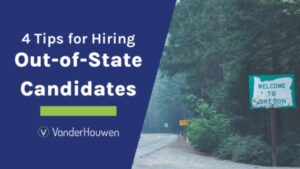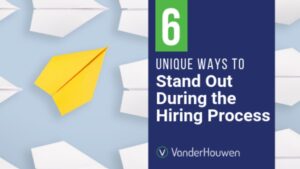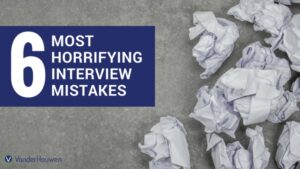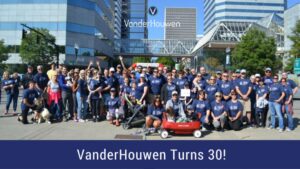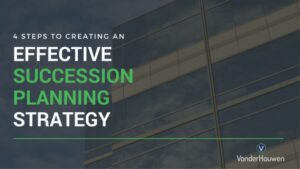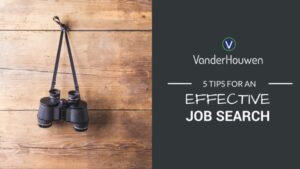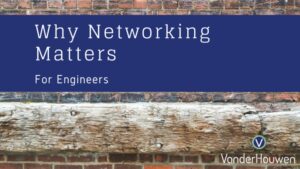4 Tips for Staying Organized in Your Job Search
It can be really easy to feel overwhelmed with all the moving parts of a job search. Customizing your resume, drafting cover letters, filling out forms in application portals, scheduling interviews, sending follow up notes to hiring managers—all these tasks can pull you in several directions and leave you thinking: Where did my time go?
That’s why it’s so important to stay organized. We’ve talked in the past about the importance of maximizing your job search by setting clear goals, drafting custom resumes, and seeking resources to help you prepare for your interviews. But another key aspect of this process is staying on top of your tasks. Here are 4 tips to help you stay organized in your job search and bring clarity, confidence, and perspective to each application.
When you’re in the thick of the application process, you may find yourself applying to 20 or more jobs per day. Not only can that get overwhelming in terms of time, it can also be easy to lose track of what jobs you’ve already applied for or what stage you’re at for each application. By keeping track of these items in an Excel or Word doc, you can save time sifting through emails and spend better time elsewhere. Here’s what to include:
Company Name:
Company Website:
Job Title:
Job ID Number: if applicable
URL of Job Post:
Contact Name: the HR manager, Recruiter, etc.
Date Applied: when you submitted your application
Follow Up Date: when you follow up or plan to follow up
Plus, reaching out on LinkedIn gives you another opportunity to speak to the mission and values of the company, and how you’d be a great fit. Referencing the website and company values shows hiring managers that you’re paying attention—not just to the job post itself, but that you’re doing your research and speaking to their key values.
Here’s a quick list of what you should include in your message when reaching out to hiring managers or recruiters on LinkedIn:
• Mention what specific job you’ve applied for.
• Speak to what interests you about that position and why you applied.
• Include a specific value statement based on research you’ve done on the company.
• Mention what excites you about potentially working there.
• End with a specific call-to-action: ask about next steps, ask who you can get in touch with to further your candidacy, inform the hiring manager of your availability.
The more jobs you apply for, the more grueling it can feel to go through the first and final step of an application—from the submission to the follow up. After all, applying to a single job can sometimes take an hour or more!
Instead of completing your application process for one job at a time, it’s much more efficient to combine similar tasks for multiple jobs. For example, say there are 20 jobs you want to apply for today. Here’s how to maximize your time:
• First, input all job information into your Excel/Word doc
• Create and save your custom resumes and cover letters for each position. Try to do this by grouping similar jobs together, so that you don’t feel like you have to start from scratch each time. Not sure what it means to make a custom resume? Here’s a guide.
• Once all your documents are saved and ready for upload, begin the submission process for each position. • In your Excel/Word doc, indicate the dates on which you have applied.
• Schedule time about a week into the future to send a follow up message.
• Send follow up messages emphasizing interest and connecting values.
You’ll find that combining similar tasks in this way, instead of going through this whole cycle one at a time for each job, saves a lot of valuable hours in the long run.
Maybe it’s conflict resolution. Or time management. Think about what qualities or traits you need to work on, and spend time bettering them. Here are a couple of great resources to help you get started.
Start With Why, Simon Sinek. This book is all about aligning your time, goals, and purpose. It’s important that one complements the other—if you’re spending a lot of time on something, you should make sure to it contributes to a larger goal. Having a plan and staying organized helps you to make decisions with purpose. It helps you to better identify your goals: Are you just looking for a 9-5 that helps you pay the bills? Or are you looking for an ideal job with all the perks and perfect fit?
Procrastinate on Purpose, Rory Vaden. This book focuses on spending time on things today that create time for you tomorrow, using what’s called a focus funnel. By using this focus funnel, you can ask yourself important questions: Can I eliminate this task? Can I automate this task? Can I delegate this task? Can I procrastinate this task? Does it have to be done today? What if it’s done tomorrow? As tasks work through the focus funnel, you’re able to better determine your most significant priorities and what tasks you need to actually concentrate on.
Do your research, connect with the right people, and stay organized. Leveraging these tips will not only help you save time during your job search, but will make you a more prepared candidate overall.
That’s why it’s so important to stay organized. We’ve talked in the past about the importance of maximizing your job search by setting clear goals, drafting custom resumes, and seeking resources to help you prepare for your interviews. But another key aspect of this process is staying on top of your tasks. Here are 4 tips to help you stay organized in your job search and bring clarity, confidence, and perspective to each application.
1. Track your job applications in an Excel or Word document
When you’re in the thick of the application process, you may find yourself applying to 20 or more jobs per day. Not only can that get overwhelming in terms of time, it can also be easy to lose track of what jobs you’ve already applied for or what stage you’re at for each application. By keeping track of these items in an Excel or Word doc, you can save time sifting through emails and spend better time elsewhere. Here’s what to include:
Company Name:
Company Website:
Job Title:
Job ID Number: if applicable
URL of Job Post:
Contact Name: the HR manager, Recruiter, etc.
Date Applied: when you submitted your application
Follow Up Date: when you follow up or plan to follow up
2. After applying, use LinkedIn to reach out to Hiring Managers, Recruiters, or other influencers at the company
Submitting an application isn’t the beginning and end of your job search—networking is how people get jobs, and you never know who is on the other side of the hiring process. Maybe there’s a friend or acquaintance that works at the company you’re applying to. If you reach out to hiring managers on LinkedIn and they notice that similar connection, your friend could likely put in a good word for you!Plus, reaching out on LinkedIn gives you another opportunity to speak to the mission and values of the company, and how you’d be a great fit. Referencing the website and company values shows hiring managers that you’re paying attention—not just to the job post itself, but that you’re doing your research and speaking to their key values.
Here’s a quick list of what you should include in your message when reaching out to hiring managers or recruiters on LinkedIn:
• Mention what specific job you’ve applied for.
• Speak to what interests you about that position and why you applied.
• Include a specific value statement based on research you’ve done on the company.
• Mention what excites you about potentially working there.
• End with a specific call-to-action: ask about next steps, ask who you can get in touch with to further your candidacy, inform the hiring manager of your availability.
3. Combine similar tasks
The more jobs you apply for, the more grueling it can feel to go through the first and final step of an application—from the submission to the follow up. After all, applying to a single job can sometimes take an hour or more!
Instead of completing your application process for one job at a time, it’s much more efficient to combine similar tasks for multiple jobs. For example, say there are 20 jobs you want to apply for today. Here’s how to maximize your time:
• First, input all job information into your Excel/Word doc
• Create and save your custom resumes and cover letters for each position. Try to do this by grouping similar jobs together, so that you don’t feel like you have to start from scratch each time. Not sure what it means to make a custom resume? Here’s a guide.
• Once all your documents are saved and ready for upload, begin the submission process for each position. • In your Excel/Word doc, indicate the dates on which you have applied.
• Schedule time about a week into the future to send a follow up message.
• Send follow up messages emphasizing interest and connecting values.
You’ll find that combining similar tasks in this way, instead of going through this whole cycle one at a time for each job, saves a lot of valuable hours in the long run.
4. Always be working on something.
There’s a reason in interviews that hiring managers ask you to talk about weaknesses or failures. They want to know that you have insight into yourself, have problem solving skills, and are always working to better yourself.Maybe it’s conflict resolution. Or time management. Think about what qualities or traits you need to work on, and spend time bettering them. Here are a couple of great resources to help you get started.
Start With Why, Simon Sinek. This book is all about aligning your time, goals, and purpose. It’s important that one complements the other—if you’re spending a lot of time on something, you should make sure to it contributes to a larger goal. Having a plan and staying organized helps you to make decisions with purpose. It helps you to better identify your goals: Are you just looking for a 9-5 that helps you pay the bills? Or are you looking for an ideal job with all the perks and perfect fit?
Procrastinate on Purpose, Rory Vaden. This book focuses on spending time on things today that create time for you tomorrow, using what’s called a focus funnel. By using this focus funnel, you can ask yourself important questions: Can I eliminate this task? Can I automate this task? Can I delegate this task? Can I procrastinate this task? Does it have to be done today? What if it’s done tomorrow? As tasks work through the focus funnel, you’re able to better determine your most significant priorities and what tasks you need to actually concentrate on.
Do your research, connect with the right people, and stay organized. Leveraging these tips will not only help you save time during your job search, but will make you a more prepared candidate overall.
Ready to reach out to hiring managers on LinkedIn? Check out our blog on 6 Advanced Ways to Use LinkedIn to Land Your Next Job.








































